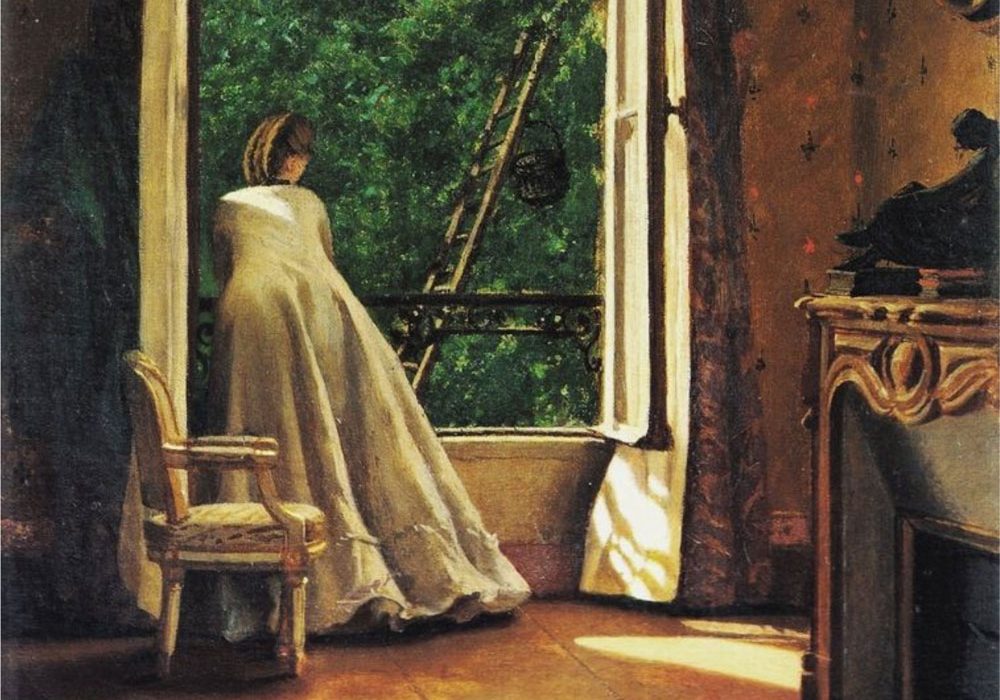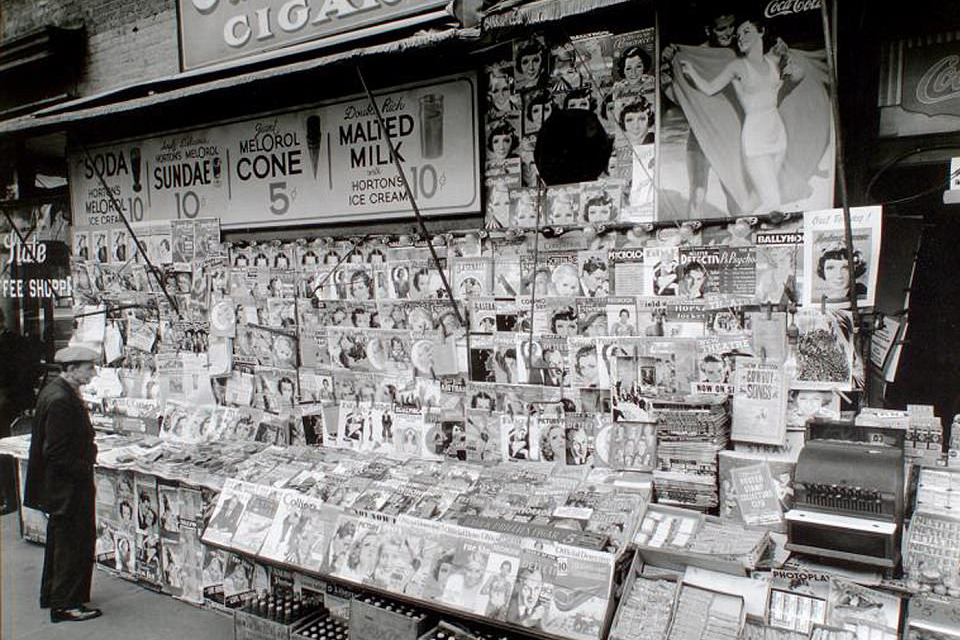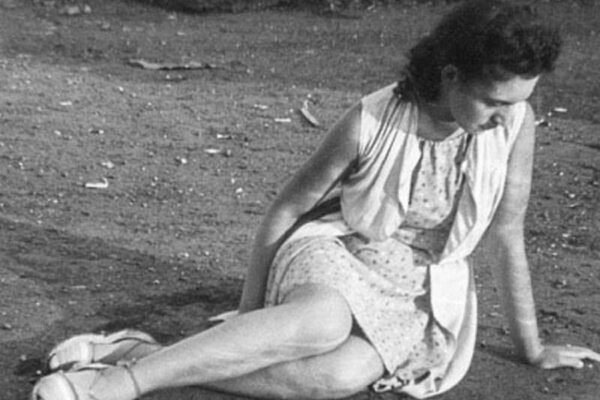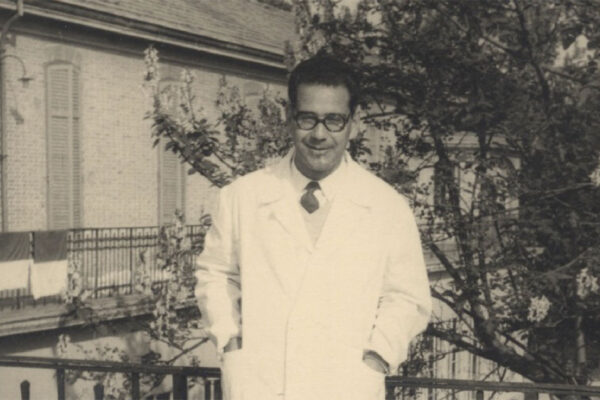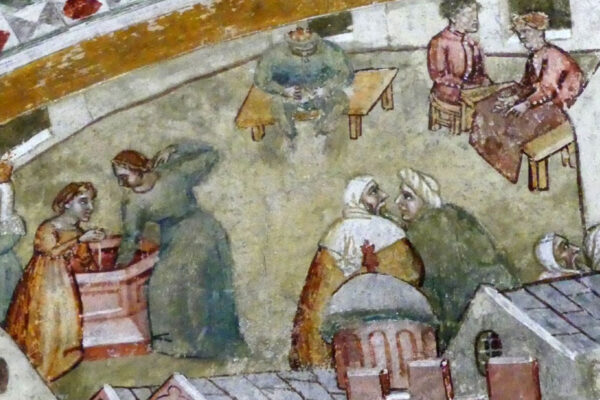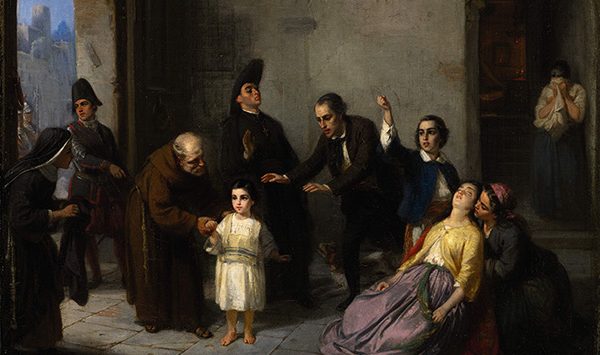Bashing Micól: On the recent staging of The Garden of The Finzi-Continis (City Opera and The National Yiddish Theatre Folksbiene).
It is never easy to reconcile literary works with their theatrical adaptations. Even more so when the work in question is a delicately complex novel like Giorgio Bassani’s The Garden of the Finzi-Continis, with its symbolic layers, political edge, and powerful humanism. Simplification is inevitable, and the way it plays out, always tells something about our time and ourselves.
In the decades following World War II and the destruction of the Jewish community of his hometown, Ferrara, Giorgio Bassani constructed his story as an ode to a world that was no more. It became a world-renowned classic, and was popularized by Vittorio De Sica’s 1970 Academy Award winning film.
A few years older than Primo Levi, he was born into a middle-class Jewish family. His father had embraced Fascism’s promise of modernity and progress. When the racial laws were promulgated in 1938, he volunteered as a teacher at the local Jewish school and joined the resistance ending up in jail. After surviving the war, he became a central figure in the publishing world and the Italian cultural scene.
Somewhat unique to Bassani’s writing was the longue-durée outlook on Fascism as an integral manifestation of the modern nation state that neither began nor ended with Mussolini’s political life. He considered this topic from the point of view of the Jewish experience and reworked it for his entire life, eventually re-assembling it as a novelistic cycle centered onThe Garden of the Finzi-Continis and entitled The Novel of Ferrara.
The Finzi-Continis are a fictional family that the author inscribes in a social artifice: they are presented as “Jewish aristocracy.” Their status is symbolized by the closed garden through which they separate themselves from societal demands: their children are taught at home, they are not members of the fascist party, daughter and son, are raised with hardly any traditional gender difference, most of their activities are not driven by productiveness. Their refusal to comply with bourgeois and national ideals pairs with their obstinate attachment to a way of being Jewish that the narrator’s “modern” father describes partly as upper class madness and partly as remnant of the ghetto era. While Bassani carefully avoids to expose religious life as entertainment for his readers, he offers just enough hints for us to understand the family’s devotion to traditions coming from different origins, the Italian, the Sephardic, with their Judaeo-Italian and Judeo-Spanish idioms and allure.
We are invited into the garden and life of the Finzi-Continis through the eyes of the “narrator” and those of a plethora of characters who establish relations with the young Alberto and Micól. The brief scene that let us glimpse into the family idiosyncratic piety occurs at the synagogue during the High Holidays. The narrator’s family and the Finzi-Continis occupy contiguous seats and the respective fathers hold their prayer shawls above their children. While Bassani distracts us with the exchange of glances between Micól and the narrator, the latter ponders his modern and progressive father’s silence—he does not know the Hebrew prayers, in contrast with Ermanno Finzi-Contini, who, in a state of stupor, davens with a “subtle and perfectly tuned voice,” his Hebrew tinged by a slight Tuscan and Ferrarese accent.
With admirable economy of language and sense of empathy, Bassani allows only one other intrusion in the religious sphere but repeats this very scene at the end of the book when Micól recalls it in her parting conversation with the narrator.
Though the book spans through a century, the story unfolds after the racial laws stripped Italian Jews of their civil rights, ousting them from education, jobs and public life. Ermanno Finzi-Contini decides to open the family garden to friends of his children, Jewish and not, who come to play tennis.
Tennis, a recognized symbol of class and wealth, is for Bassani also a symbol of relationship. In a much quoted line, by contrast, Micól compares it, to love. The transition of some youth from the exclusive “tennis club” to the exclusive “garden” allows Bassani to clarify the nature of his metaphor.
We are ushered into the garden through the eyes of a small group of youth from the club. Suddenly, the metaphor of aristocracy begins to collapse within the space of a sentence proffered by a fifteen year-old gentile kid in the group. Disdainful, he exclaims that the tennis court looks like a potato field! Bassani’s skillful deconstruction of his artifice, continues through the book as we enter surreal rooms filled with books and useless objects with little or no value, for a great part rescued from the past, by the odd inclinations of family members and the loving and obsessive loyalty of the house majordomo, Signor Perrotti.
Bassani wants us to be clear about his subject: not the Agnellis, the Rothschilds or the Pallavicinis, but rather a century old Jewish life that struggled to fit in the neatly mandated molds of the new Italian society. Like a neoplatonic muse, Micól, contains this vanishing world and is loved by the narrator. Exactly like her neoplatonic predecessors, she refuses her consent to enter the mold of mundane and bourgeois love.
It is no wonder that Bassani was puzzled by Vittorio De Sica’s simplistic and rather exploitative reinvention of Micól as a capricious and vain upper class girl who is finally forced to join her lower-ranking peers by the “reality” of the Shoah.
Decades of critical acclaim and discussions on the “real Micól” have not been able to give much substance to De Sica’s character who remains the hyper-sexualized female object of an ill-conceived moralistic tale.
Fifty years have passed and a new staging of The Garden of the Finzi-Continis has just debuted in New York. Allegedly based on the novel, the libretto is in fact a spin-off of the film. Like the film, the opera does away with Bassani’s preoccupation with human complexity, linguistic symbolism, and historical accuracy.
Set more as an American musical than an opera, the libretto opens with an odd mixture of broken Italian and broken English and is constellated with erratic bits of history and pseudo-history. As if the Racial Laws and the destruction of the Jews of Ferrara were not a sufficiently tragic fact, a section of the racist decree is entirely invented: “Jews are not allowed to emigrate. Barred from synagogues to congregate.” The Racial persecution is presented as German imposition, Ferrara in 1939 is grotesquely depicted like the Warsaw ghetto of 1942, populated by Jews with yellow stars, that, in fact, were never used in Italy. The vandalization of the synagogue, which happened during the war in 1941, is predated to the time of the laws making a caricature of the actual unfolding of the persecution. The Fascist Party anthem written in 1925 is presented as a translation of an imaginary Nazi song launched in 1938. The image of Mussolini signing the Lateran Pacts in 1929 is paraded on stage as a depiction of the 1938 racial laws which were in fact signed by King Vittorio Emanuele. Terms such as “Fascist” and “Nazis,” are used interchangeably without any regard for their factual references and even “Republicans” inexplicably appear in the mix.
If history does not matter, even less does the novel that lives on merely in the title.
The narrator, who, like the author, joins the resistance and ends up in jail, is instead spirited out of Italy and flees to America thus pre-empting his fundamental position as witness.
The indifference to facts and the way they are recorded, also redefines one of the book’s main supporting characters, Adriana Trentini, a gentile member of the tennis club, who is presented in the opera as a vocal protester against the race laws. In Bassani’s novel however, Trentini evokes not courage but the perils of self-righteousness. Adherence to the fascist norm is so embedded in her conscience that she is confused about what she is protesting and why. Her invective against the racial laws is motivated by the frustration of interrupting her tennis game half way. If anything, she states, they should have been applied more thoroughly so that the game would have not even begun. Such treatment, she adds indignantly, is something one could expect from the “zulú” (referring to the South African nation) not from “civilized” people.
Trentini occasions Bassani’s piercing reflection on the notion of innocence that, in the light of the Italian post-war mass self-absolution, he refuses to see a self-standing ethical category. In Micól’s words Adriana is “innocent,” but, she adds, being innocent is not the same as being good or knowing.
Following the same summary logic, the opera condemns Perrotti and Malnate as one-dimensional antisemites, whose literary selves, on the contrary, labor through the effort to see their Jewish interlocutors and be seen by them.
As is frequent in adaptations, the list of inventions and liberties is long. One in particular however, poses a difficult question about our society that watches and applauds after a century of feminism and the recent rise of the Me Too movement.
The re-writing of Micól goes beyond De Sica’s sexual objectification. In Bassani’s book, Micól is a quintessential resister, defined by intelligence, independence and eloquent silence. As a woman and a member of a minority, she deconstructs social roles in ways that let her keep a tender and ironic eye on friendship and give her the resolve to cultivate knowledge and wisdom. Much like Schnitzler’s Fräulein Else, she is keenly aware that outside of her garden, where she has all privileges and none, women are bound to navigate with little choice a system in which marriage, love and prostitution function as parts of the same production machine.
The 21st century Micól instead is a chatty, scattered-minded, princess-like girl whose family deserves the appellative of “Judas” by none other than a fellow Jew. She speaks aimlessly. Invariably her statements are void and entitled, always diluted by tennis, shopping, or cocktails. Lacking everything else, much like in the film, she is defined by sex.
It is true that Bassani’s writing is pervaded by allusion to a myriad of forms of eroticism that tie all of his characters. But he never uses sex as in a peep show as if it existed outside of life and human beings. Tellingly, the only sex scene in the book takes place in a brothel, and is narratively anchored in Malnate’s conversation with the women about the condition of sex workers.
The opera’s misogynistic image of Micól goes hand-in-hand with the way in which it misconstrues the metaphor of the Finzi-Continis. From frail keepers of a stratified and elusive tradition, they are made into “Holiday Jews,” as to say, Jews who do not know and do not care about traditions, but, for social conformism, go to synagogue twice a year. They are judged and despised by an equally impoverished rendition of the narrator’s father, in Bassani’s text a secular, empathic, and conflicted figure transformed into a self-righteous zealot whose religiosity is pompously performed, without the slightest care for what Italian liturgy sounds like, but with exactly the same fanfare with which the cast performs the Manifesto of Race.
This stereotyping contrasts greatly with the way Bassani’s characters delicately voice different ways of being Jewish. In a somewhat marginal passage he indicates that Micól is the only one in the house who butchers the chickens. He uses the Judeo-Italian verb “sciachtare” which refers to the Jewish ritual slaughtering. Needless to say, no aristocratic girl is in charge of the kitchen let alone of slaughtering, but with a rather unconventional narrative choice, the author makes Micól agent of one of the most archaic rites of her religion.
We cannot but ask the reason of such re-writing that upturns the novel’s most modern elements: history and the challenges of retelling, the relation between human emotions and social norm, the fluidity of human beings, the plurality of Jewish life. Each of these topics could have been fruitfully engaged today, but instead they were silenced. Most importantly, Bassani moves from a place of compassion that is completely at odds with the opera’s loud pigeonholing and bashing. How did this come into being?
One possibility is that Bassani set up the book so that this could happen. Not that he imagined that it could be re-written (he famously sued De Sica’s producer for his treatment of the novel), but he set a trap for the reader. When Bassani wrote the novel, he knew that his audience was reluctant to hear the story of the persecution of the Jews (in which many Italians had been complicit) and wanted to avoid any kind of reckoning. Perhaps Bassani didn’t want to offer a tale of good and evil where readers could comfortably identify with the good. In fact, he wanted readers to comfortably unleash their prejudices. Like in Jacob Moreno’s psychodramas, Bassani wants us to put forward our prejudice and deal with it.
This is one of the effects of enveloping the Jewish tradition in the artifice of aristocracy. Aristocracy is something whose symbolic authority no one denies (even the communist municipal administration of Ferrara, as he explains at the beginning of the novel) and, at the same time, is a universal object of contempt, about which few have qualms. He trusted that everyone, communists or fascists regardless of their age, nationality or religion could be tricked into becoming guinea pigs and demonstrating how easily and viciously prejudice can be set free. No one would resist bashing aristocracy and, with it, the woman and Judaism he fictitiously placed at its center.
Bassani however, plays a fair game and gives us all necessary information to avoid falling into the trap. But isn’t this often the case with human beings? He warns us that he has built an artifice and dismantles it in front of our eyes. But are we able to feel and read once our prejudice has been given free rein? He tells us exactly where things are. But he also plays at distracting us. The narrator’s father’s endearing rant on the Finzi-Continis is skillfully placed to give us permission to indulge in our own that, as we see in the film and more prominently in the opera, may be far less endearing and in fact imply something quite sinister.
In a New York Times interview published in 1972, Bassani boldly stated: “I am Micól.” Indeed, he speaks through all of his characters playing across genders and social roles and allowing the space of mystery in which human beings continuously redefine one another through relationships. It should not be a surprise that the trick of aristocracy has worked in America just as well as it did in Italy fifty years ago but for different reasons. It unleashed not only the humiliation of an intelligent and complex female character, but also of traditions and ways of being Jewish that, evidently, elude the directors’ normative judgment. Inevitably in the process, history is ignored and political conscience mocked. With the best intentions we applaud this new cocktail of Holocaust and sexism and, what counts most of all, we can feel good about it.
Image: Vito d’Ancona (1825-1884), Window Overlooking the Apple Orchard.


